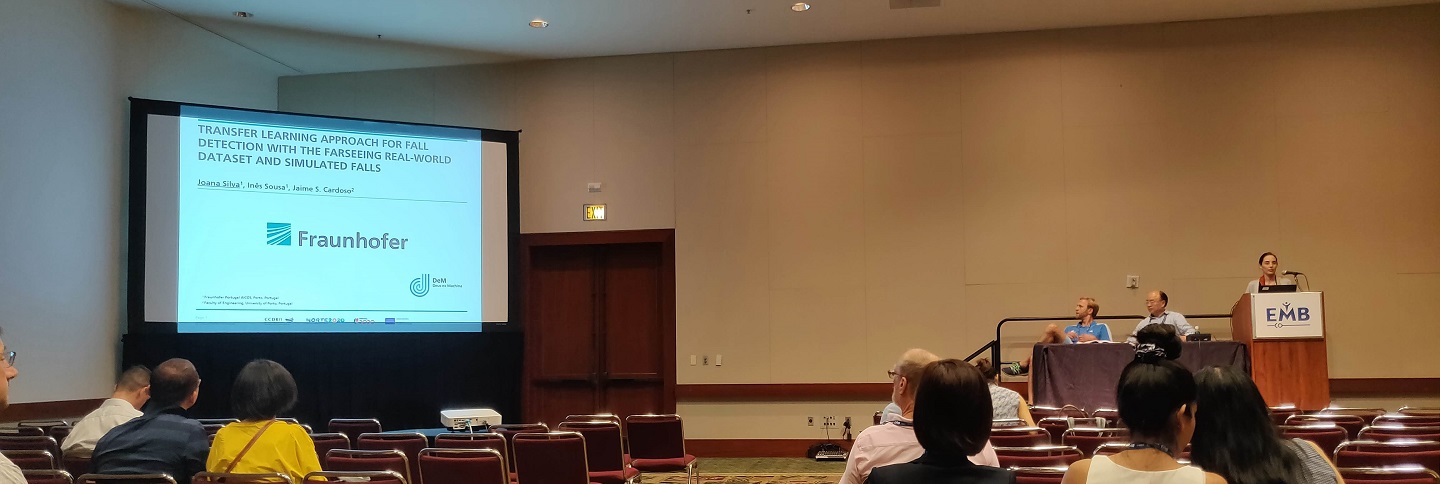24.7.2018
FhP-AICOS’ researcher Joana Silva presented this weekend a paper at the 40th International Engineering in Medicine and Biology Conference, organized by the IEEE Engineering in Medicine & Biology Society (EMBS), in Honolulu, Hawai.
The paper, titled “Transfer learning approach for fall detection with the FARSEEING real-world dataset and simulated falls”, proposes a new method for bridging the gap between data born of real-life falls and that born of simulated falls, and was authored by FhP-AICOS' researchers Joana Silva, Inês Sousa, and Jaime Cardoso from University of Porto’s Faculty of Engineering.
Falls are an important health issue, as they are a major cause of injuries and loss of independence amongst older people, which is why researchers at FhP-AICOS have tackled several projects over the years perfecting automatic fall detection systems that can trigger prompt assistance to the faller and reduce the consequences of a fall incident.
However, in the real-world, real falls occurring in free living conditions are hard to document and it is extremely difficult to acquire and annotate accelerometer data corresponding to these events, which is why researchers often use simulated datasets to create fall detection algorithms. Yet, simulated datasets have various limitations, since it is difficult to exactly mimic the movements occurring during a fall and the validation of systems trained with simulated falls remains unclear.
To counteract this problem, FhP-AICOS’ researchers propose combining two datasets: one with real falls and non-falls, from the EU project FARSEEING real-world dataset, and another with simulated falls and non-fall events, acquired at Fraunhofer AICOS with younger and more active volunteers.
The paper presented describes a transfer learning approach for combining a dataset of simulated falls and non-falls, in order to train a set of supervised classifiers for discriminating between falls and non-falls events. The objective was to determine if a combination of simulated and real falls could enrich the model.
Researchers observed an improvement when mixing the real falls and simulated non-falls compared to the case when only simulated falls were used for training. When testing with a mixed set with real falls and simulated non-falls, it is even more important to train with a mixed set, they concluded. Moreover, it was possible to determine that a model trained with simulated falls generalize better when tested with real falls, than the opposite. The overall accuracy obtained for the combination of different datasets was above 95%.
The international conference where this paper was presented, known as EMBC'18 (40th International Engineering in Medicine and Biology Conference), included a broad array of scientific tracks that covered diverse topics of cutting-edge research and innovation in biomedical engineering, healthcare technology R&D, translational clinical research, technology transfer and entrepreneurship, and biomedical engineering education. The theme of this year’s meeting was “Learning from the Past, Looking to the Future”, inspired by the 40th anniversary of the world’s largest international biomedical engineering meeting.
 Fraunhofer Center for Assistive Information and Communication Solutions – AICOS
Fraunhofer Center for Assistive Information and Communication Solutions – AICOS